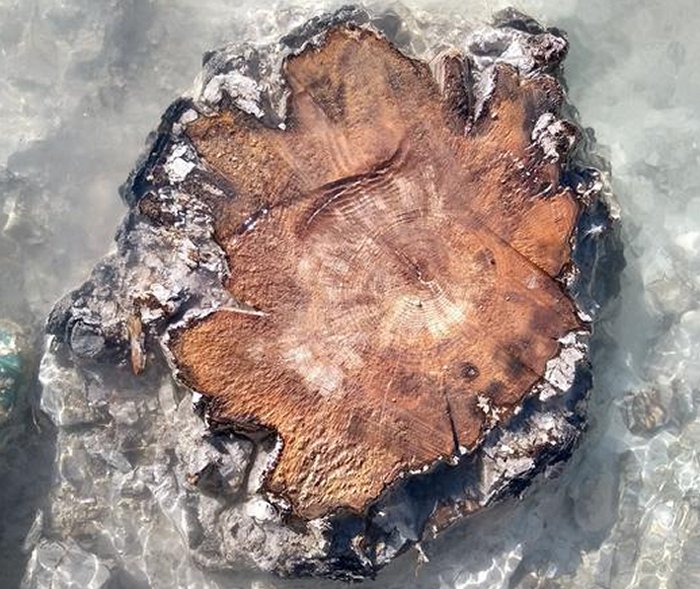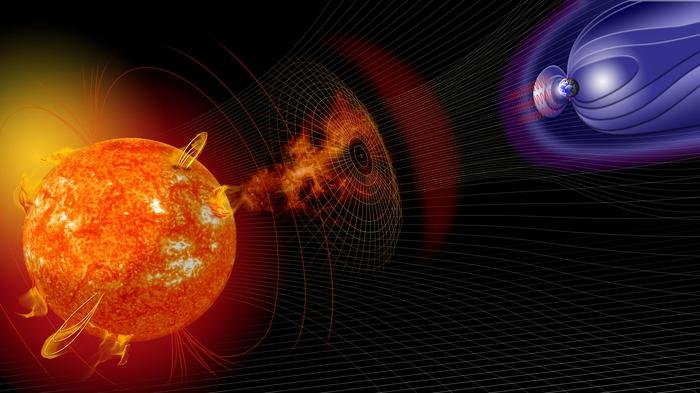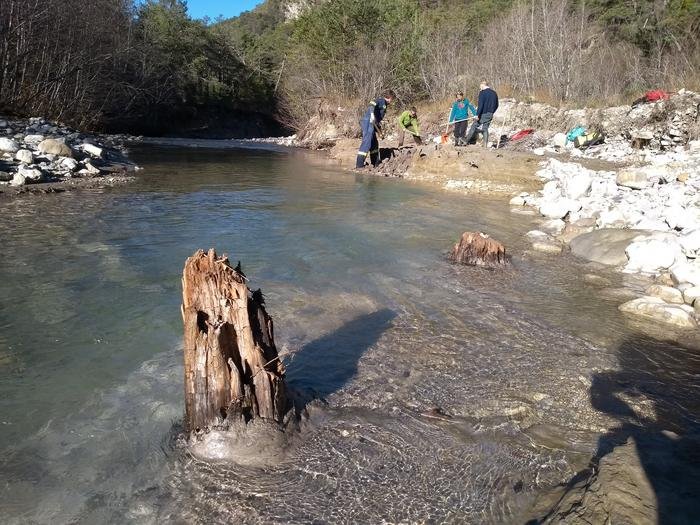Eddie Gonzales Jr. – AncientPages.com – An international team of scientists have discovered a huge spike in radiocarbon levels 14,300 years ago by analyzing ancient tree-rings found in the French Alps.

Tree rings of a buried subfossil tree in the Drouzet river. Image credit: Cécile Miramont
The radiocarbon spike was caused by a mᴀssive solar storm, the biggest ever identified.
A similar solar storm today would be catastrophic for modern technological society – potentially wiping out telecommunications and satellite systems, causing mᴀssive electricity grid blackouts, and costing us billions of pounds.
The academics are warning of the importance of understanding such storms to protect our global communications and energy infrastructure for the future.
The collaborative research, which was carried out by an international team of scientists, is published today (Oct 9) in The Royal Society’s Philosophical Transactions A: Mathematical, Physical and Engineering Sciences and reveals new insights into the Sun’s extreme behaviour and the risks it poses to Earth.
A team of researchers from the Collège de France, CEREGE, IMBE, Aix-Marseille University and the University of Leeds measured radiocarbon levels in ancient trees preserved within the eroded banks of the Drouzet River, near Gap, in the Southern French Alps.

Image credit: NASA
The tree trunks, which are subfossils – remains whose fossilization process is not complete – were sliced into tiny single tree-rings. Analysis of these individual rings identified an unprecedented spike in radiocarbon levels occurring precisely 14,300 years ago. By comparing this radiocarbon spike with measurements of beryllium, a chemical element found in Greenland ice cores, the team proposes that the spike was caused by a mᴀssive solar storm that would have ejected huge volumes of energetic particles into Earth’s atmosphere.
Edouard Bard, Professor of Climate and Ocean Evolution at the Collège de France and CEREGE, and lead author of the study, said: “Radiocarbon is constantly being produced in the upper atmosphere through a chain of reactions initiated by cosmic rays. Recently, scientists have found that extreme solar events including solar flares and coronal mᴀss ejections can also create short-term bursts of energetic particles which are preserved as huge spikes in radiocarbon production occurring over the course of just a single year.”
The researchers say that the occurrence of similar mᴀssive solar storms today could be catastrophic for modern technological society, potentially wiping out telecommunications, satellite systems and electricity grids - and costing us billions of pounds. They warn that it is critical to understand the future risks of events like this, to enable us to prepare, build resilience into our communications and energy systems and shield them from potential damage.
Tim Heaton, Professor of Applied Statistics in the School of Mathematics at the University of Leeds, said: “Extreme solar storms could have huge impacts on Earth. Such super storms could permanently damage the transformers in our electricity grids, resulting in huge and widespread blackouts lasting months. They could also result in permanent damage to the satellites that we all rely on for navigation and telecommunication, leaving them unusable. They would also create severe radiation risks to astronauts.”

Subfossil trees in the Drouzet river. Image credit: Cécile Miramont
Nine such extreme solar storms – known as Miyake Events – have now been identified as having occurred over the last 15,000 years. The most recent confirmed Miyake Events occurred in 993 AD and 774 AD. This newly-identified 14,300-year-old storm is, however, the largest that has ever been found – roughly twice the size of these two.
The exact nature of these Miyake Events remains very poorly understood as they have never been directly observed instrumentally. They highlight that we still have much to learn about the behaviour of the Sun and the dangers it poses to society on Earth. We do not know what causes such extreme solar storms to occur, how frequently they might occur, or if we can somehow predict them.
Professor Bard said: “Direct instrumental measurements of solar activity only began in the 17th century with the counting of sunspots. Nowadays, we also obtain detailed records using ground-based observatories, space probes, and satellites. However, all these short-term instrumental records are insufficient for a complete understanding of the Sun. Radiocarbon measured in tree-rings, used alongside beryllium in polar ice cores, provide the best way to understand the Sun’s behaviour further back into the past.”
The largest, directly-observed, solar storm occurred in 1859 and is known as the Carrington Event. It caused mᴀssive disruption on Earth – destroying telegraph machines and creating a night-time aurora so bright that birds began to sing, believing the Sun had begun to rise. However, the Miyake Events (including the newly discovered 14,300-yr-old storm) would have been a staggering entire order-of-magnitude greater in size.
Professor Heaton said: “Radiocarbon provides a phenomenal way of studying Earth’s history and reconstructing critical events that it has experienced. A precise understanding of our past is essential if we want to accurately predict our future and mitigate potential risks. We still have much to learn. Each new discovery not only helps answer existing key questions but can also generate new ones.”
Cécile Miramont, ᴀssociate Professor of Paleoenvironments and Paleoclimates at IMBE, Aix-en-Provence University, said: “Finding such a collection of preserved trees was truly exceptional. By comparing the widths of the individual tree rings in the multiple tree trunks, we then carefully pieced together the separate trees to create a longer timeline using a method called dendrochronology. This allowed us to discover invaluable information on past environmental changes and measure radiocarbon over an uncharted period of solar activity.”
Original source – University of Leeds -press release via Eurekalert
Paper
Written by Eddie Gonzales Jr. – AncientPages.com – MessageToEagle.com Staff Writer





